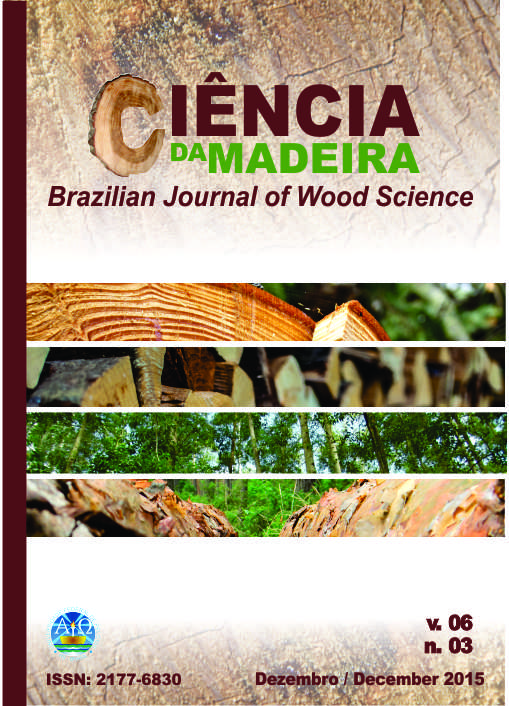Efficiency of used oil engine as preservative of Amazonian woods submitted to xylophagous termites
Resumo
This study aimed to evaluate the efficiency of used oil engine as preservative of Amazonian woods submitted to xylophagous termites. Trattinnickia rhoifolia (amescla), Erisma uncinatum (cedrinho) and Copaifera langsdorffii (copaíba) samples, measuring 2x2x10cm, were submitted to preservative treatments by fast (5 minutes) and prolonged (24 hours) soak in oily product with different viscosities, SAE 10 and SAE 15. The used oil engine retention rate in each sample was determined after preservative treatments performance. Treated and untreated samples were submitted to feeding preference test with Nasutitermes sp. (xylophagous termite) for 45 days for preservative treatment efficiency evaluation, with mass loss determination at the end of this period. The soak period and the used oil engine viscosity had not statistically influence the retention rate, except for cedrinho wood. Regarding the assessed woods, copaiba wood showed the highest retention rate, differing statistically from amescla and cedrinho woods. Any samples treated with used oil engine showed xylophagous termites attack, demonstrating the efficiency of this substance in the preservative treatment. Among the untreated wood, copaíba and cedrinho showed the highest and the lowest rates of mass loss, respectively.
Downloads
A CIÊNCIA DA MADEIRA resguarda o direito de modificar o trabalho em quaisquer hipóteses na ordem gramatical e ortográfica com o objetivo de manter a utilização correta da língua portuguesa ou ingles.
A CIÊNCIA DA MADEIRA passa a possuir o direito sobre todos os trabalhos enviados quanto a reprodução e publicação online.



 https://orcid.org/0009-0007-3945-9715
https://orcid.org/0009-0007-3945-9715